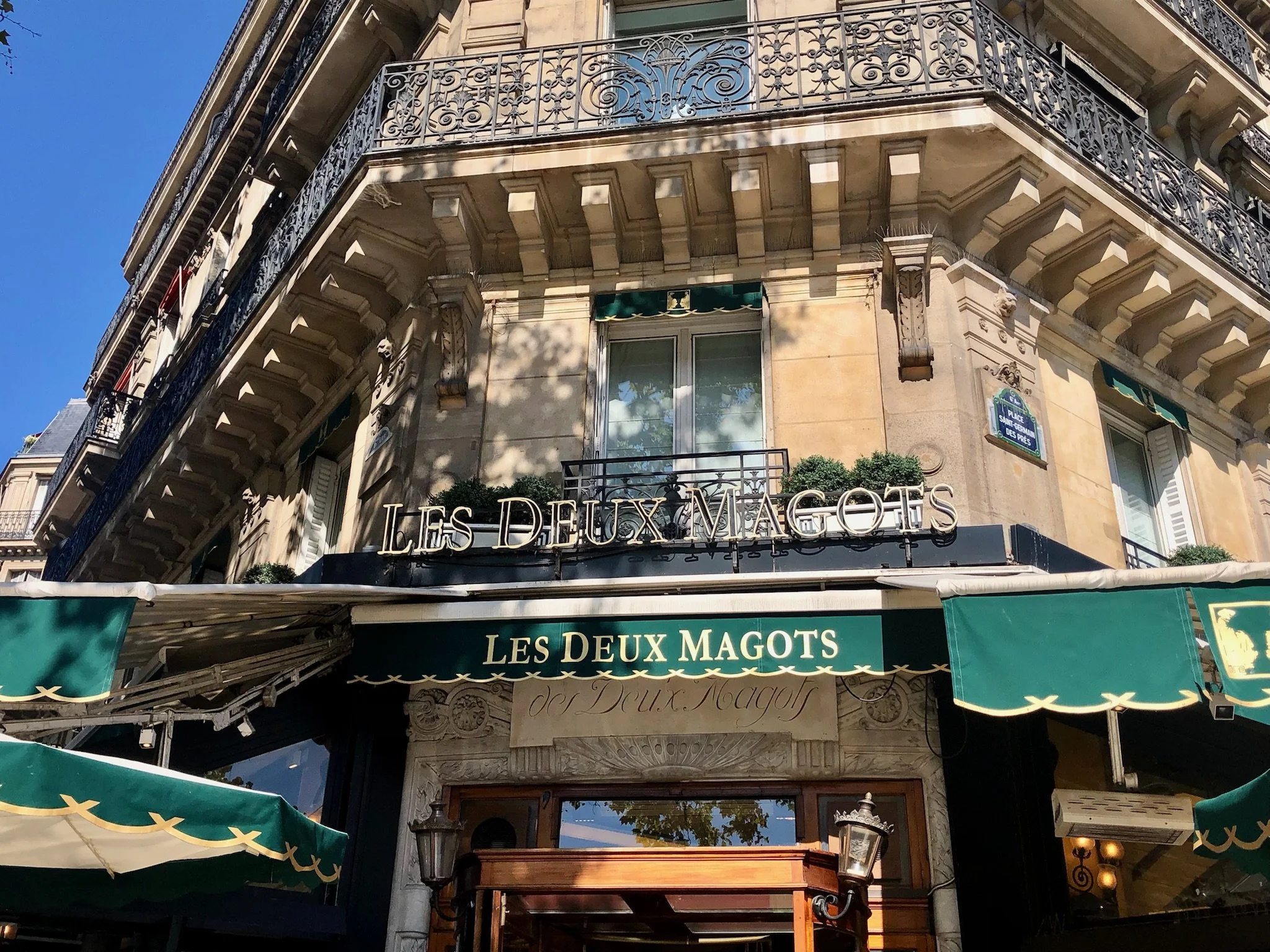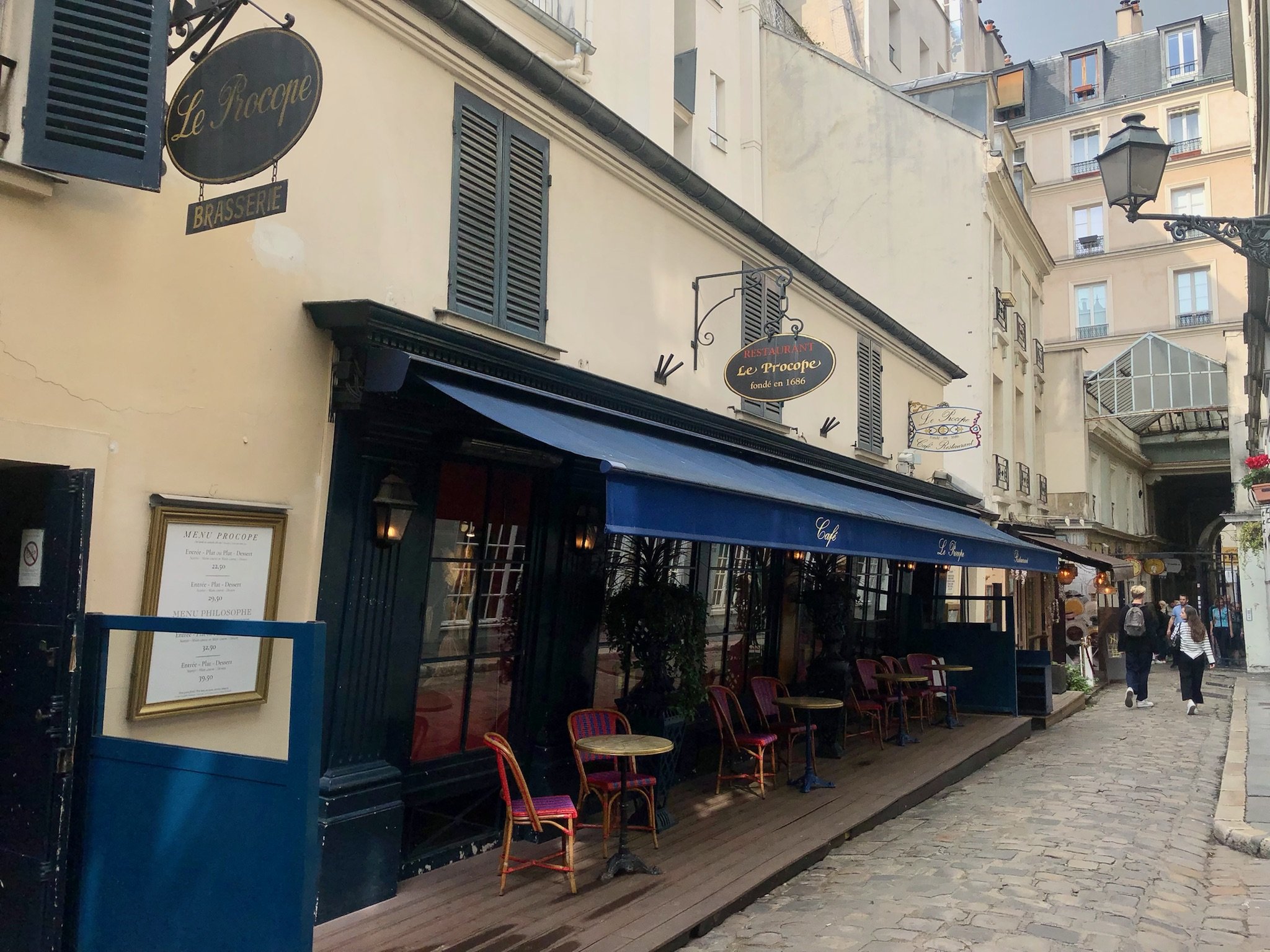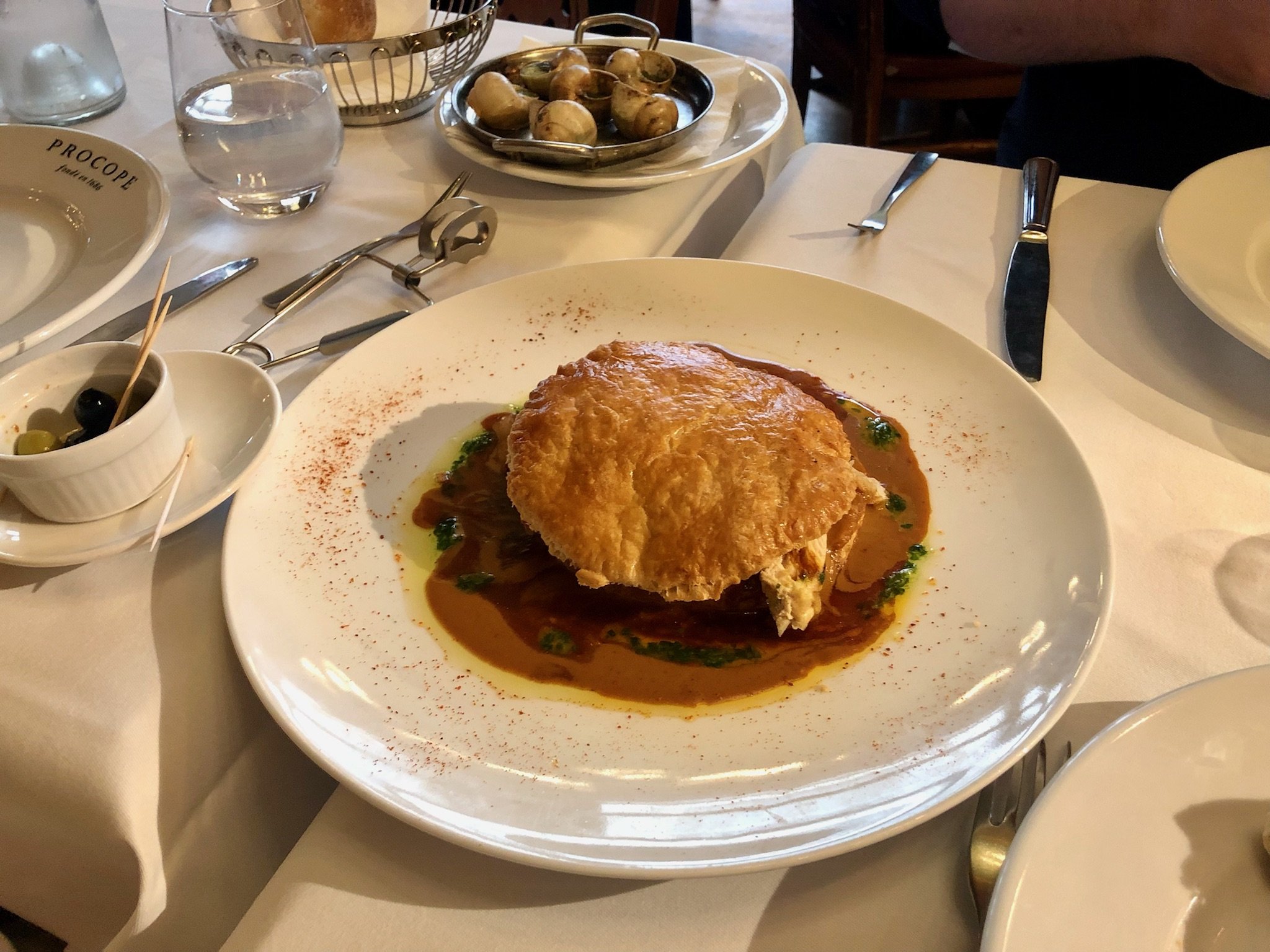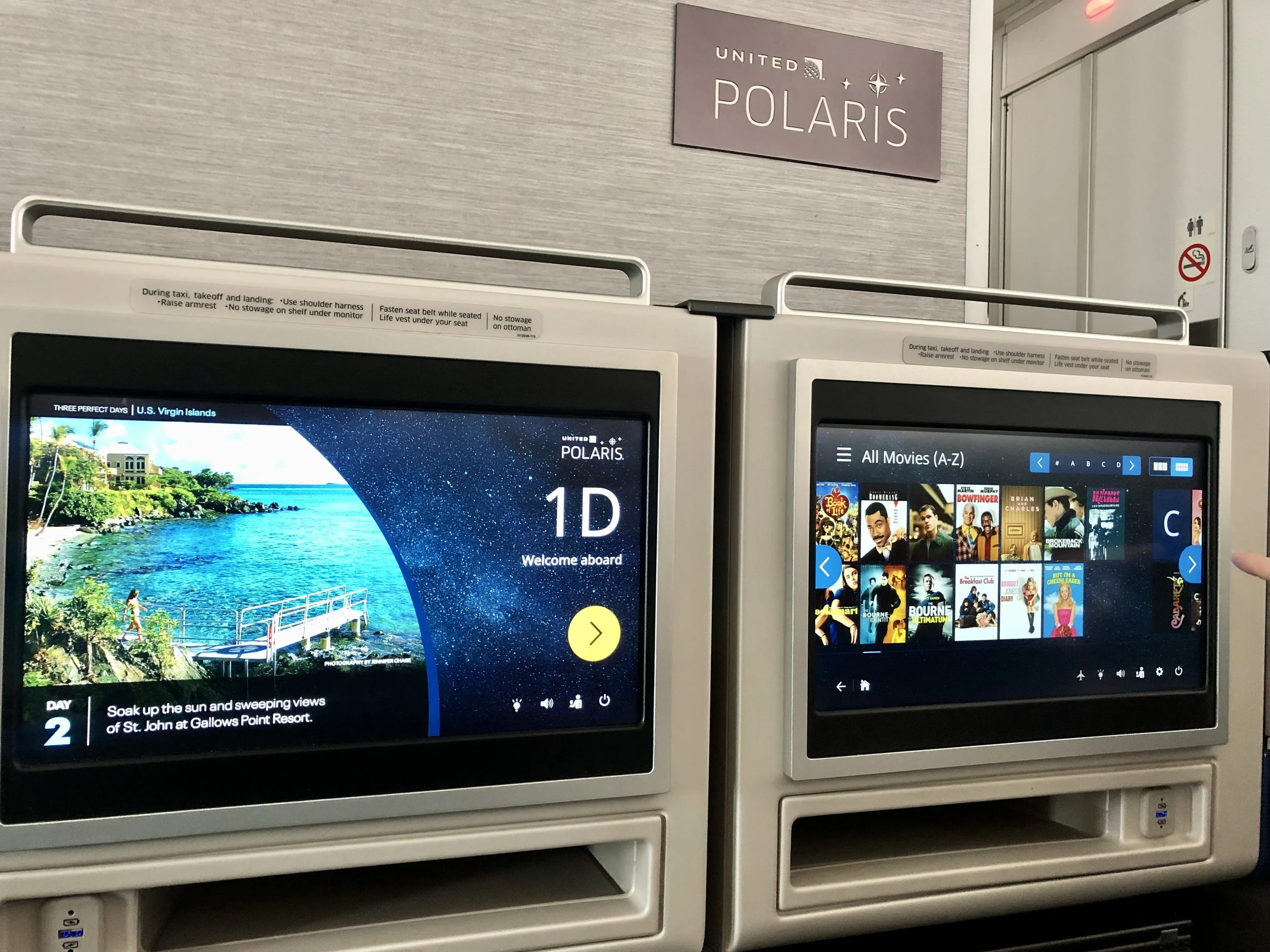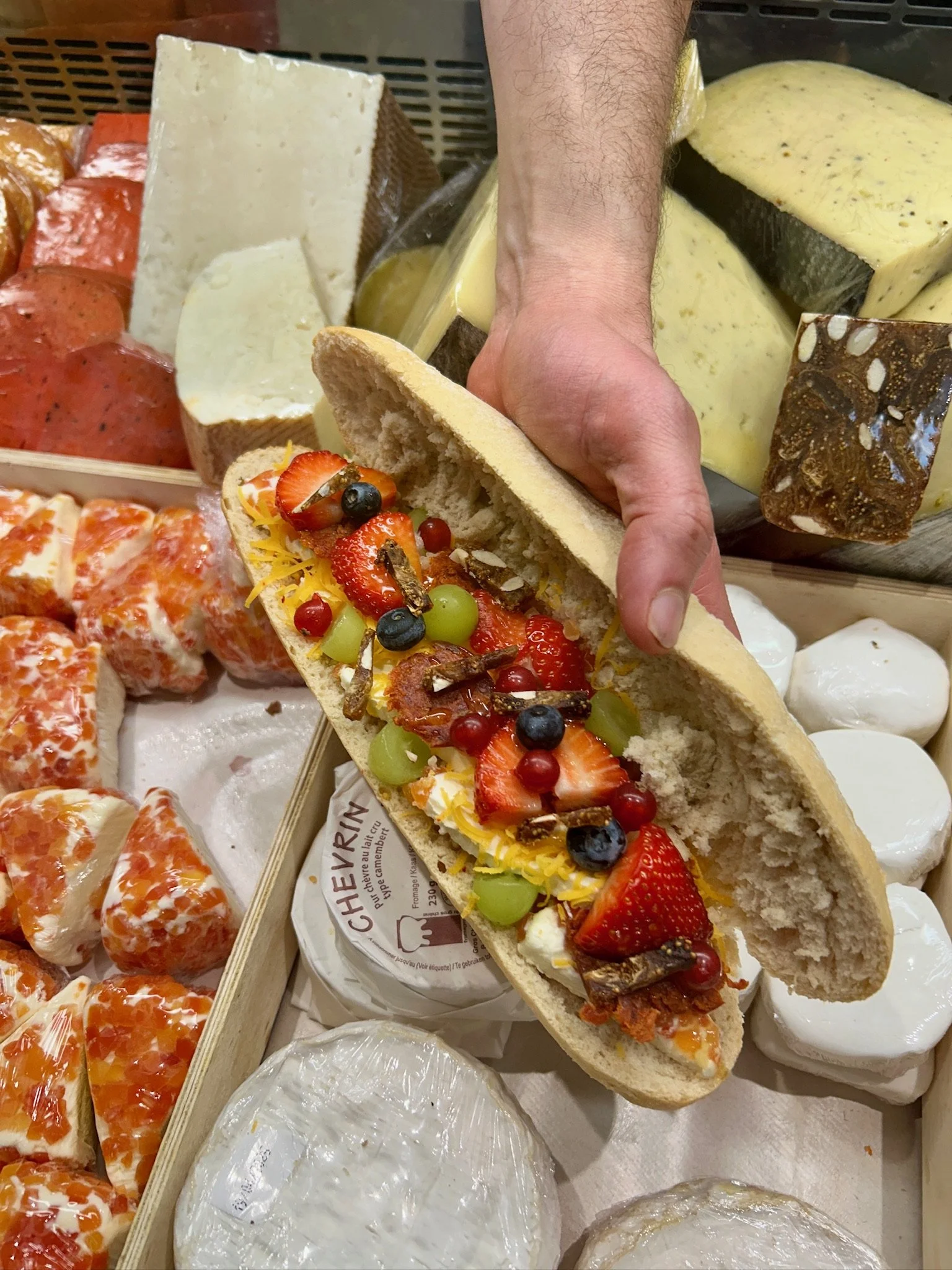As Seen Abroad: Paris Literary Cafe Tour
We’re on vacation! For the first time since we started this blog, we’re traveling abroad. As we journey across Asia, Europe, and America, we’ll update with some of the fun places we visit. Yay!
This post contains affiliate links. For more information, please read our affiliate disclosure.
One thing you might know about me is that I fancy myself a bit of a writer. Perhaps you’ve read my humorous middle-grade book or one of my many other works of literary brilliance. What you might not know is that two of my all-time favorite books are F. Scott Fitzgerald’s The Great Gatsby and James Joyce’s A Portrait of the Artist as a Young Man or that I absolutely love the works of Ernest Hemingway and George Orwell. What do all these writers have in common? They all spent time in Paris about a hundred years ago (give or take).
As a fancy-pants college boy scribe visiting the city of Paris, I wanted to check out some of the locations where my literary heroes lived and hung out. But since I was also on vacation, I didn’t want to just tramp through the streets to look at a bunch of buildings that no longer house the things they did in the books I’ve read. Instead, we took a tour of the most famous cafes and restaurants in Paris that have been home to artists and writers to see if they’ve still got the goods. Join us!
Stop One: The Fitzgerald House
Our first stop was 14 Rue de Tilsitt, where Scott and Zelda Fitzgerald lived when they were in Paris. It’s conveniently just a block from the Arc de Triomphe, and very easy to find. The Arc is pretty, but has become completely overrun with Instagrammers waiting in line to sit in the middle of a busy street and take asinine pictures.
The building itself is gorgeous, with a cafe on the first floor and beautiful iron balconies at every window. If you listen hard enough, you can just about hear the sounds of corks popping, glasses being smashed, spouses cheating on each other, and a wife accusing her husband of being a homosexual while he has her committed to an institution. Ah, the Jazz Age.
As there was nothing to do here, we made our way East to Saint Germain-des-Pres to have lunch at our first legendary cafe of the afternoon.
Stop Two: Les Deux Magots
With a history that goes back to 1885 (and that’s just as a cafe - before that, it was a novelty shop, which is where the Chinese figurines that give the eatery its name come from), Deux Magots boasts of having been home to regulars including Pablo Picasso, Ernest Hemingway, Jean-Paul Sartre, James Joyce, George Orwell, and Albert Camus. It’s still going as a trendy brunch spot, and we had to wait in line a while to get a table outside.
Deux Magots is definitely living off its reputation, as the prices were high and the food only so-so. Eriko got a somewhat-burnt croque monsieur and I had some toast with goat cheese that I later regretted putting into my body (though it was tasty). We were pestered throughout our meal by a giant bee that seemed intent on using its dying breath to kill us and nearly succeeded.
One thing to know about Europe is that just like in America, when it comes to coffee, no one can agree on what anything is. You go to one place and order a cappuccino, and they give you what Australians would call a flat white. You got to another place, and they give you a giant foamy monstrosity. Another, and you’ll get a thin latte in a tall glass. There is no consistency or agreement on what a “cappuccino” is, even in Italy. In Florence, you can order a “cappuccino freddo” and everyone knows you mean an iced coffee with milk that is drank through a straw, but I tried asking for one near the coast by Pisa and the guy looked at me like I was insane and then poured me a lukewarm coffee with some lukewarm milk in it. In Paris, I tried ordering an espresso macchiato only to have the waitress react like I’d just ordered moon rocks and dodo meat; I later learned that the French call this a “noisette;” but then of course the next time I ordered a noisette, they brought me a cafe au lait, so what I’m saying is good luck ordering coffee in Europe.
At Deux Magots, I ordered a cafe creme because Hemingway mentions ordering that in A Moveable Feast. It turns out a cafe creme is just a black coffee with cream on the side, American-style. Eriko got an orange juice, and it was just okay, especially compared to the orange juices she had in Italy that were fresh-squeezed everywhere we went.
Fun Fact: Ernest Hemingway dedicates a significant portion of his memoir A Moveable Feast to accusing Scott Fitzgerald of having a small penis and saying that Wyndham Lewis had the eyes “of an unsuccessful rapist.” Great friend!
Overall, Deux Magots is a pretty place, a fine spot for brunch, but the food and service are nothing special. They’re coasting on their name, and why shouldn’t they? Even though I found it to be only so-so, I’d still go back because Orwell and Joyce and Camus went there, so there must be something to it.
After lunch, we took a stroll south to one of the best spots in all of Paris.
Stop Three: Le Jardin du Luxembourg
Located in the 6th arrondissement, construction of the garden began in 1612 when blah blah blah you get the point. The nice thing about a garden is that it doesn’t require a history lesson; you can just go and enjoy the pretty flowers. The Luxembourg has flowers, fountains, shady wooded areas, big well-manicured lawns, sprawling paths, and plenty of space so it doesn’t feel crowded even when there are lots of people there.
The park also has plenty of chairs sprinkled throughout so you can sit beneath the trees and read a book or enjoy a sandwich while nearby a bunch of people practice what appears to be some sort of sword fighting technique. We shared part of our time in the park with a large group of little scouts having some sort of jamboree with their troop leaders near the big square trees at the south end of the park.
I love walking through parks, and this was a perfect way to spend part of a sunny day. What’s the literary connection? Well, I believe George Orwell hung out here sometimes when he was poor, so there’s that. And if you lie on the green grass, close your eyes, and point your face at the sun, in the redness behind your eyes you can just about make out the image of Hemingway and Fitzgerald sharing a passionate mustachey kiss while Zelda flashes her taint to a chauffeur to try and make her husband jealous. Ah, literature.
It had been almost an hour since I’d had a coffee, so it was time to race to our next cafe.
Stop Four: La Closerie des Lilas
South of the Jardin du Luxembourg you’ll find La Closerie des Lilas, a cafe famous for supposedly being where Hemingway wrote much of The Sun Also Rises, a book that is not only good but focuses on a group of people who spend all their time sitting in cafes, so perfect for this particular afternoon.
The restaurant is hidden behind gorgeous greenery that adds to its charm, and it definitely feels secluded and quiet, even at an outside table. When you walk in, you pass the famous oyster shack, and I use the term “shack” very pointedly. I’m not big on oysters even when I’m next to the ocean, and certainly not on a hot day in a city not known for its hygiene (these people invented an entirely new device to install in their bathrooms so they could avoid showering every day), and definitely not after seeing where they’re kept before they’re brought out. The oyster station here was good enough for Hemingway, but not good enough for me, a guy who doesn’t like oysters.
I had an acceptable cappuccino and Eriko had a decent tea and the bathroom was okay and the staff largely left us alone while I sat and read my Kindle and felt like a fancy boy. The best part, though, was the old man (and when I say old, I mean old) playing the piano inside.
Ojiichan
He was hunched over and ancient, but his fingers could still move! Eriko went and gave him a tip and said “I love your music,” and he said, “Oh, thank you!” The staff liked us after that.
In terms of a place to relax, have a coffee, and hang out, Closerie was definitely better than Deux Magots. I’m glad it’s still kicking and that it wasn’t a complete touristy mess. They’re obviously trading on the Hemingway connection with their menu, but it would have been worth visiting even without that. Classy old-fashioned decor and service is a winner no matter who’s been in your restaurant.
From Closerie, it was just a short walk down the street to perhaps the most famous Parisian cafe of them all.
Stop Five: Le Select
While the other places on this list are mostly cafes one might visit during the daytime or for a meal, Le Select, located in Montparnasse, was more famous as a bar in the 1920s, frequented by the likes of Picasso, Hemingway, Henry Miller, and plenty of other artists/drunks (let’s be honest: these words are synonyms) over the years. That’s not our style these days, but if you are a lover of alcohol, Le Select looks like a nice place to enjoy a cold glass of whatever.
I ordered a cappuccino as per usual, and learned that at Le Select, that means a giant beastly cloud of foam with lots of cocoa powder on top. Eriko got an orange juice, which was adequate. The food on other people’s tables looked good, but we weren’t hungry, more ill from drinking so much coffee in such a short period of time.
Looking around, I could definitely see how this place became a cool late-night hangout back in the day, and it’s easy to imagine a bunch of loaded writers and painters having incoherent arguments about aesthetics and liquor and the clap all night long.
I wish we’d gone to Le Select when we’d been hungry to try the food, but alas, we were tired and wanted to get some rest, so we ended our cafe tour for the day. There were plenty of places we didn’t hit, but that just means we’ll be able to visit them next time. And there’s one more literary spot we did manage to stop at during our time in Paris.
BONUS: Le Procope
A few days later, we went with my mother to Le Procope, the oldest restaurant in Paris. Open since 1686, Le Procope has hosted famous intellectuals like Voltaire, Benjamin Franklin, and Gregg Maxwell Parker. The cafe-style awning and outdoor seating are actually the rear of the restaurant, which is off a small alleyway. The front is more formal-looking and old-fashioned, which is pretty much how I would describe the entire restaurant. It’s purposely stuffy and fancypants to give you that “we’ve been here more than 400 years” feeling.
The food is also quite traditional, and we went for the Frenchiest stuff we could find. We started with escargots (for the stupid, that’s snails). Escargots isn’t so much a food as a conduit for delivering butter to your body. They taste like nothing, but man can they carry lots of butter to your mouth.
We then went for the vol-au-vent, which I assumed would be tiny little cups of pastry like on British Bake Off, but it turns out this chef doesn’t watch that show. It was basically a big, rich chicken pot pie. We also got coq a vin in an equally rich sauce. The food was okay, but not amazing. The sauces were so thick I felt they’d definitely been simmering for a loooooong time.
Along with coffee and tea (they had a huge selection of teas from Angelina), we tried the coffee pie and floating islands, a dessert I was unfamiliar with, but that was absolutely delicious, with sweet meringue in sweet custard and topped with sweet barfbits to put me in a serious sugar coma.
The best part of Le Procope was that, much like many restaurants in France, you’re allowed to bring dogs inside. Next to us was a pair of ladies embarking on some sort of grand dessert tour (they had three desserts in a row while we were there) who had a tiny white dog that lay pleasantly next to my mom the entire time. It even brought over its treat to show it to her, so very proud of itself.
The food at Le Procope is okay, but overpriced, as you’re really paying for the chance to say you ate at the oldest cafe in Paris. We had many better meals for less money during our trip. Also, the bathroom is upstairs, which is an issue when your 71-year-old mother has Parkinson’s and walks with a cane. The staff was also not the most attentive, telling me they were unable to call us a cab right before I stepped outside and saw two empty cabs going by that let me know they hadn’t tried at all.
On a side note, Paris has introduced weekend street closures that are meant to encourage foot traffic but that amount to a big F-U to disabled people. Our Uber driver tried to order us to get out of his car a full kilometer from the restaurant because he didn’t want to figure out how to get there, and when I told him my mom couldn’t walk that far, he grumbled like a dick until we eventually just got out. We had several other rideshare and cab drivers cancel on us or refuse to go somewhere, forcing my mom to walk really far when she wasn’t feeling well (it was enough that I eventually deleted Uber and went with FreeNow, where the drivers were much nicer). I don’t know what they think they’re accomplishing by closing these streets, but all it did was ensure we weren’t allowed in certain parts of town (like the Latin Quarter) on weekends because my mom has trouble walking. And that’s without factoring in how long it took to get anywhere and how much extra we had to pay because of the congested traffic.
Anyway, that’s the end of our Paris literary cafe tour. In terms of enjoyability, I’d say my ranking is 1) Closerie, 2) Select, 3) Deux Magots, and 4) Procope, with those top two being the only ones worth visiting without the literary connection. But of course, the best part of this tour was the Jardin du Luxembourg, where even the crappiest of artists could find themselves inspired.
One last thing
Near Le Select is a statue of Balzac. There are actually quite a few sculptures of Balzac at the Rodin museum, and Eriko and I decided we love this guy. Just look at his robe, his wild hair and mustache, his pudgy body, and his confident smirk that says, “Yeah, you know you want this.”
Eriko said, “I think if there is a Balzac movie, Jack Black could play him.” I partially agree, though I think Danny McBride and Matt Berry could bring something to the part.
If you’re in Paris, make sure to check out Balzac, as well as the many spots frequented by giants of literature. And make sure to tip the piano guy at Closerie des Lilas. He’s earned it.

